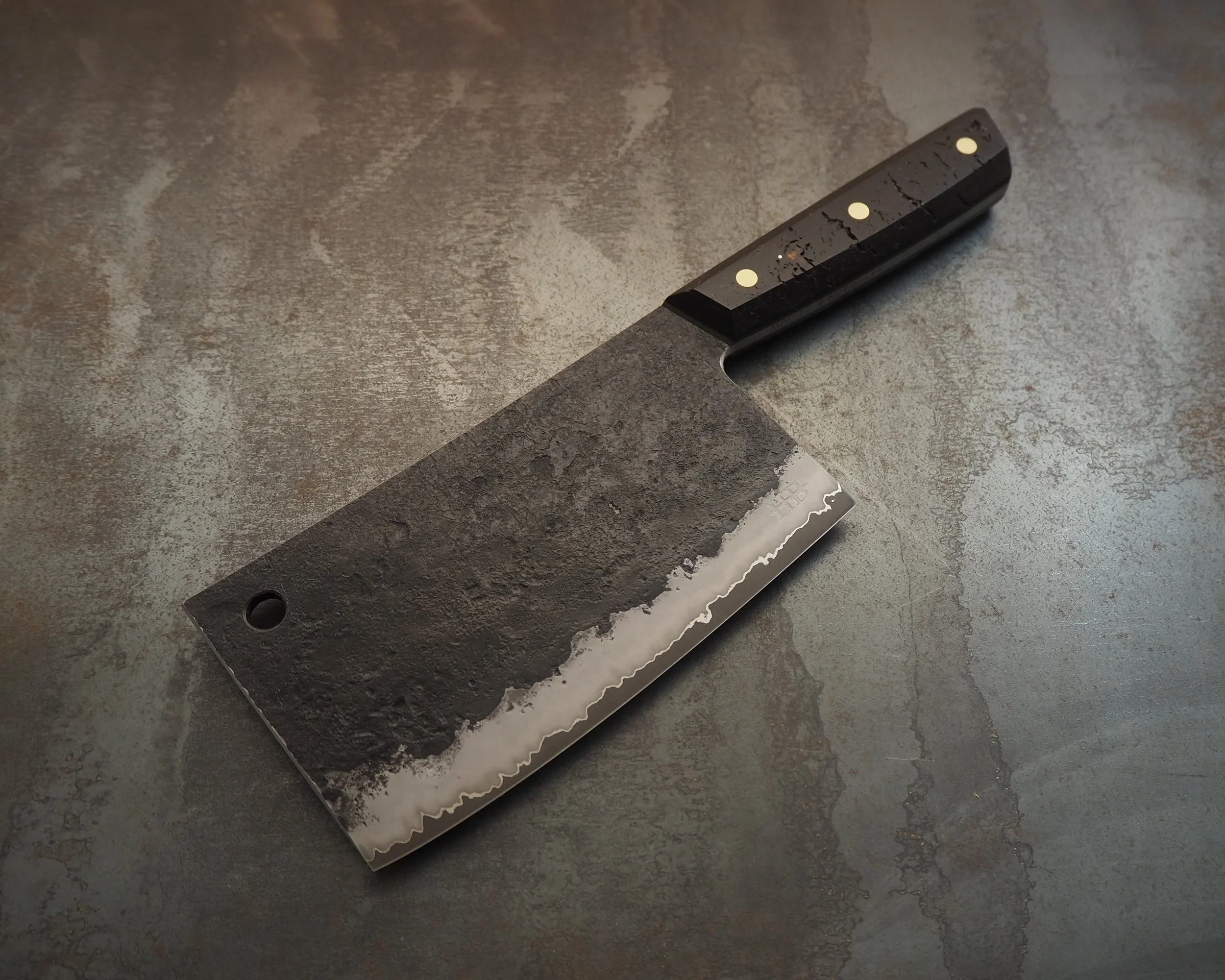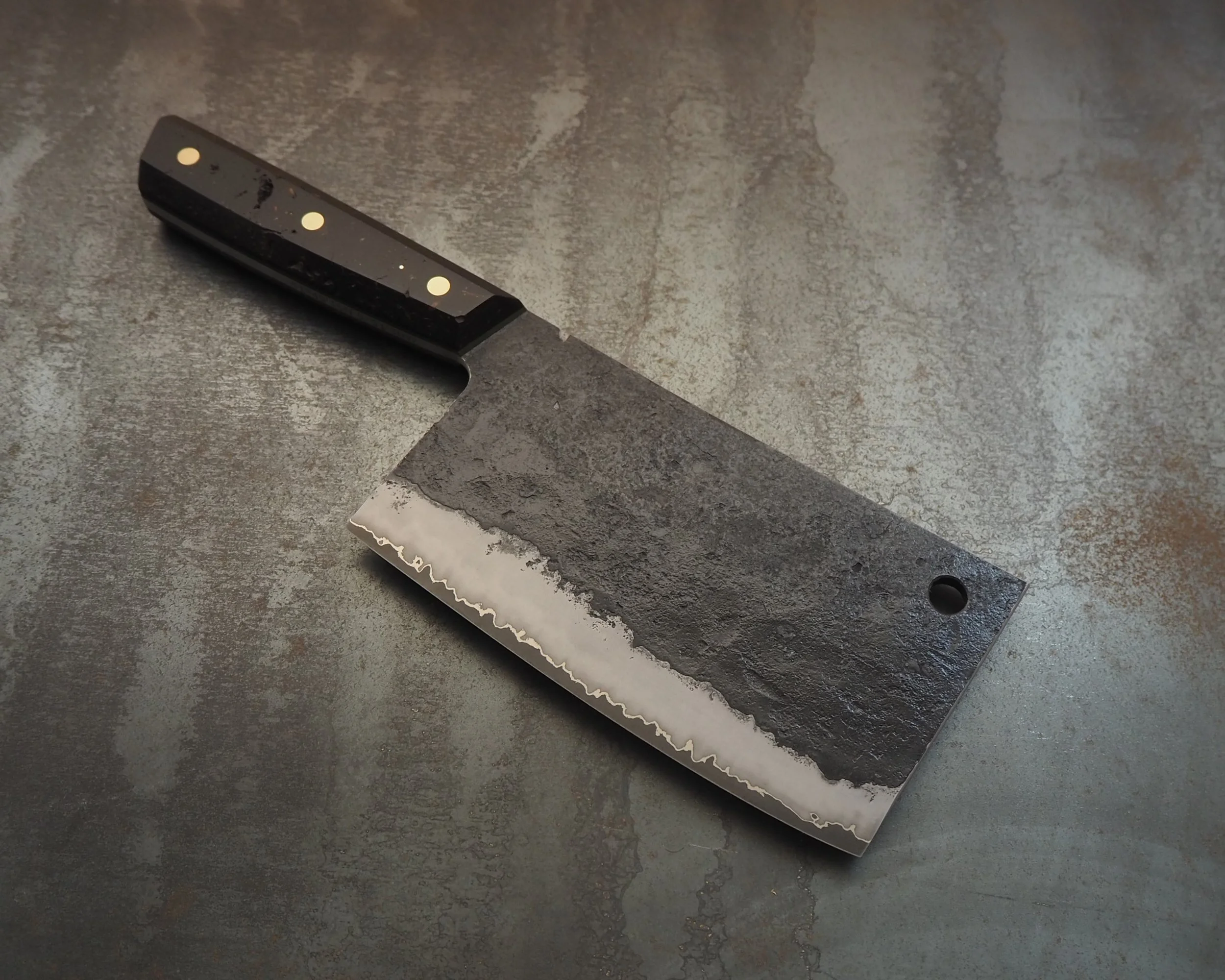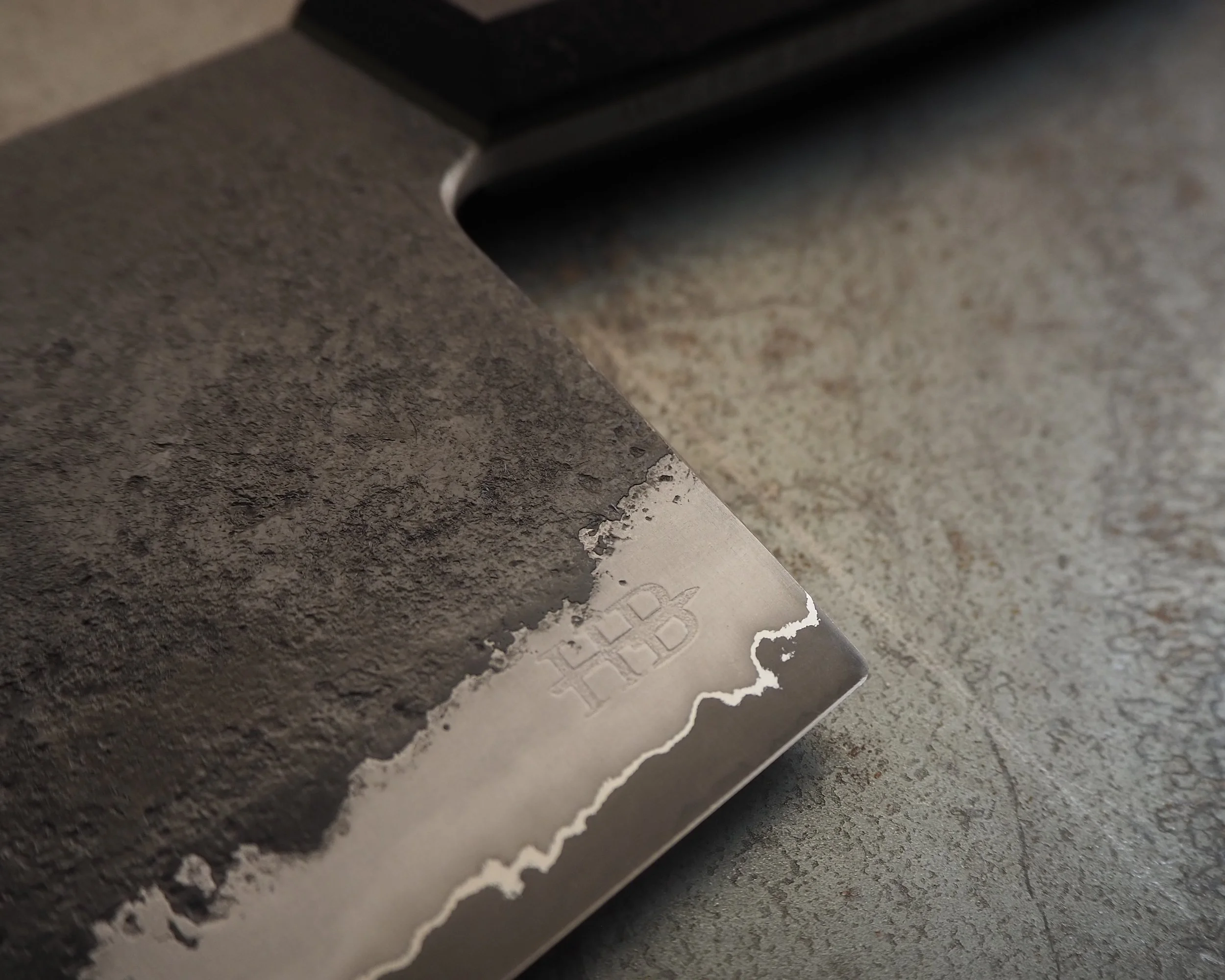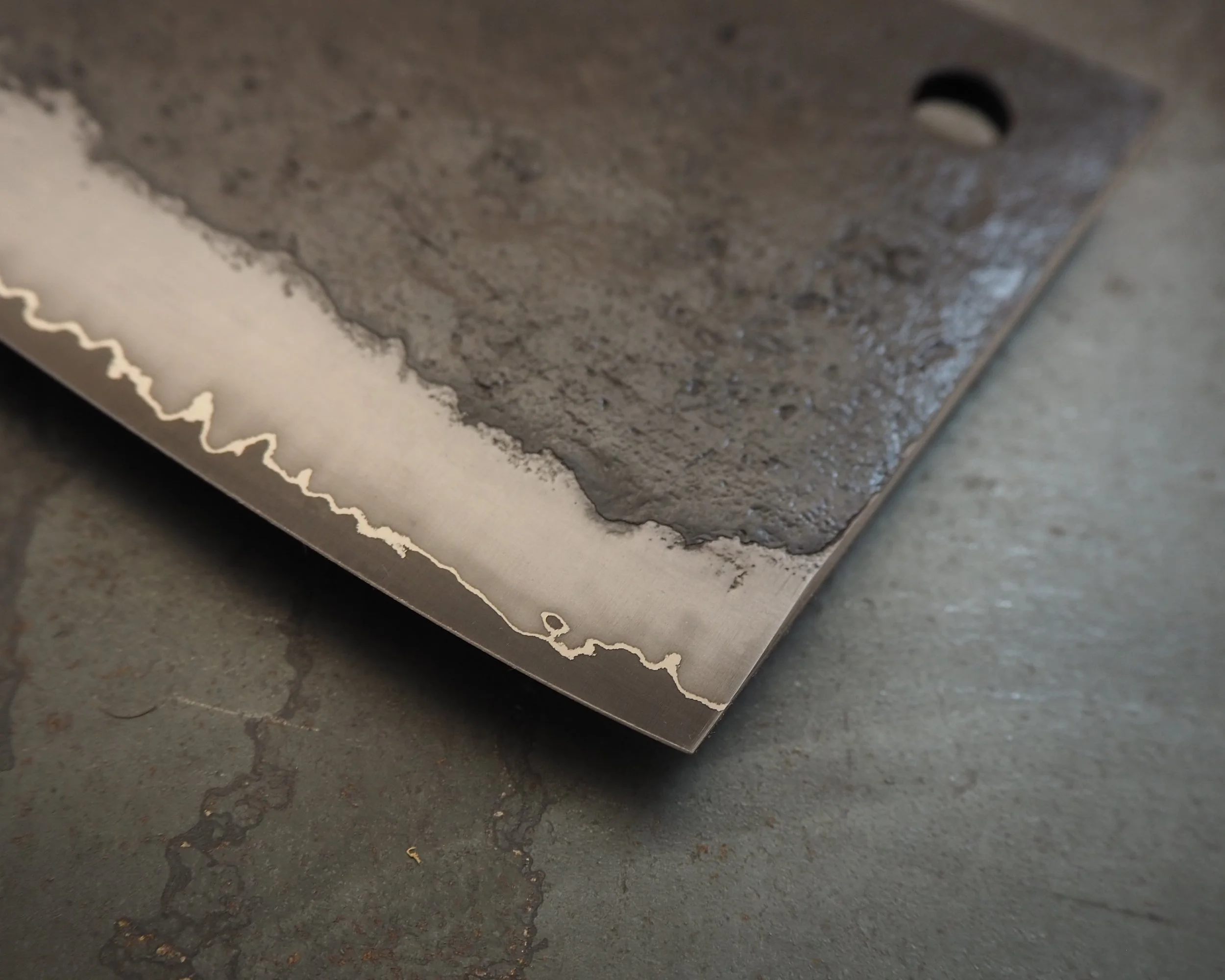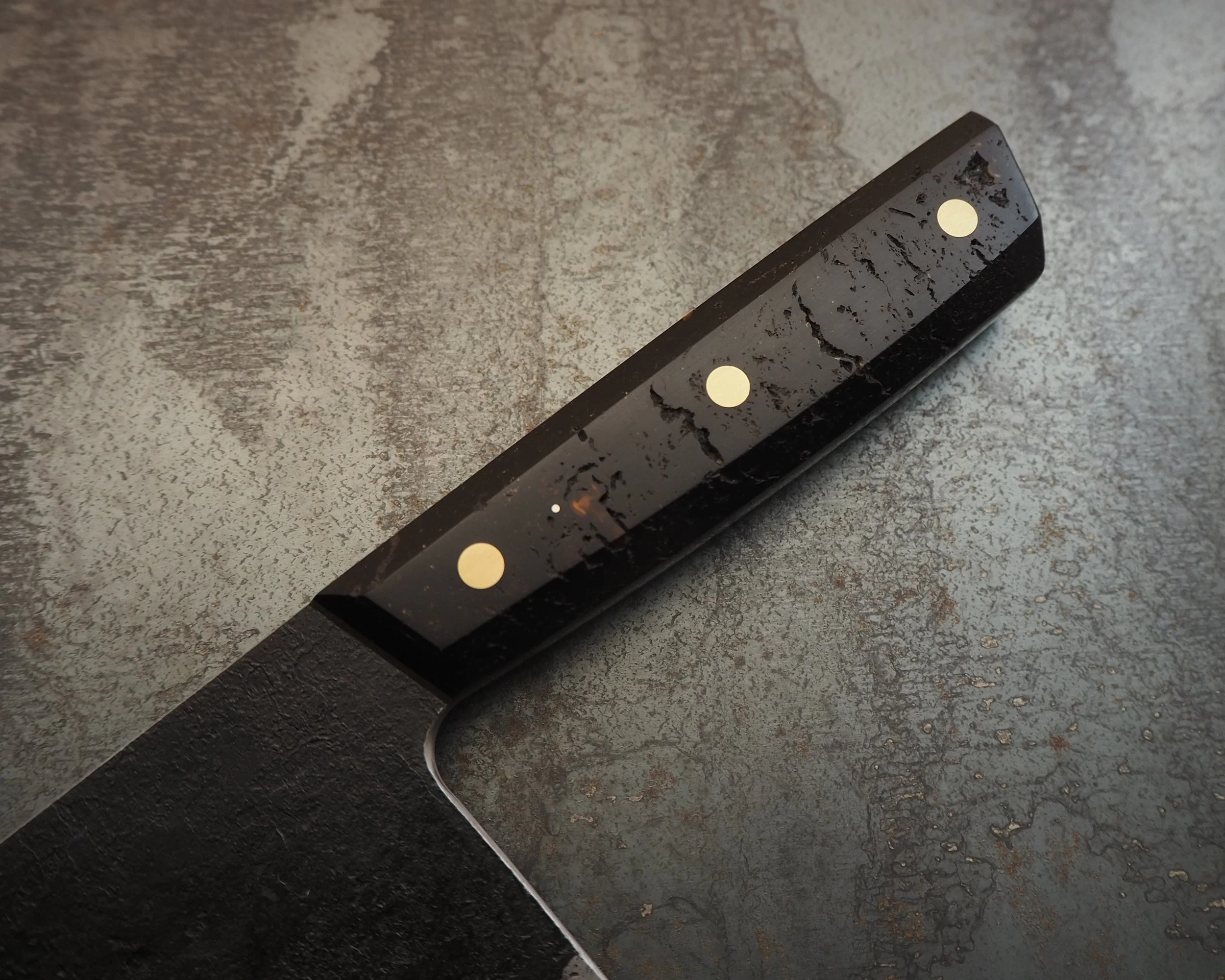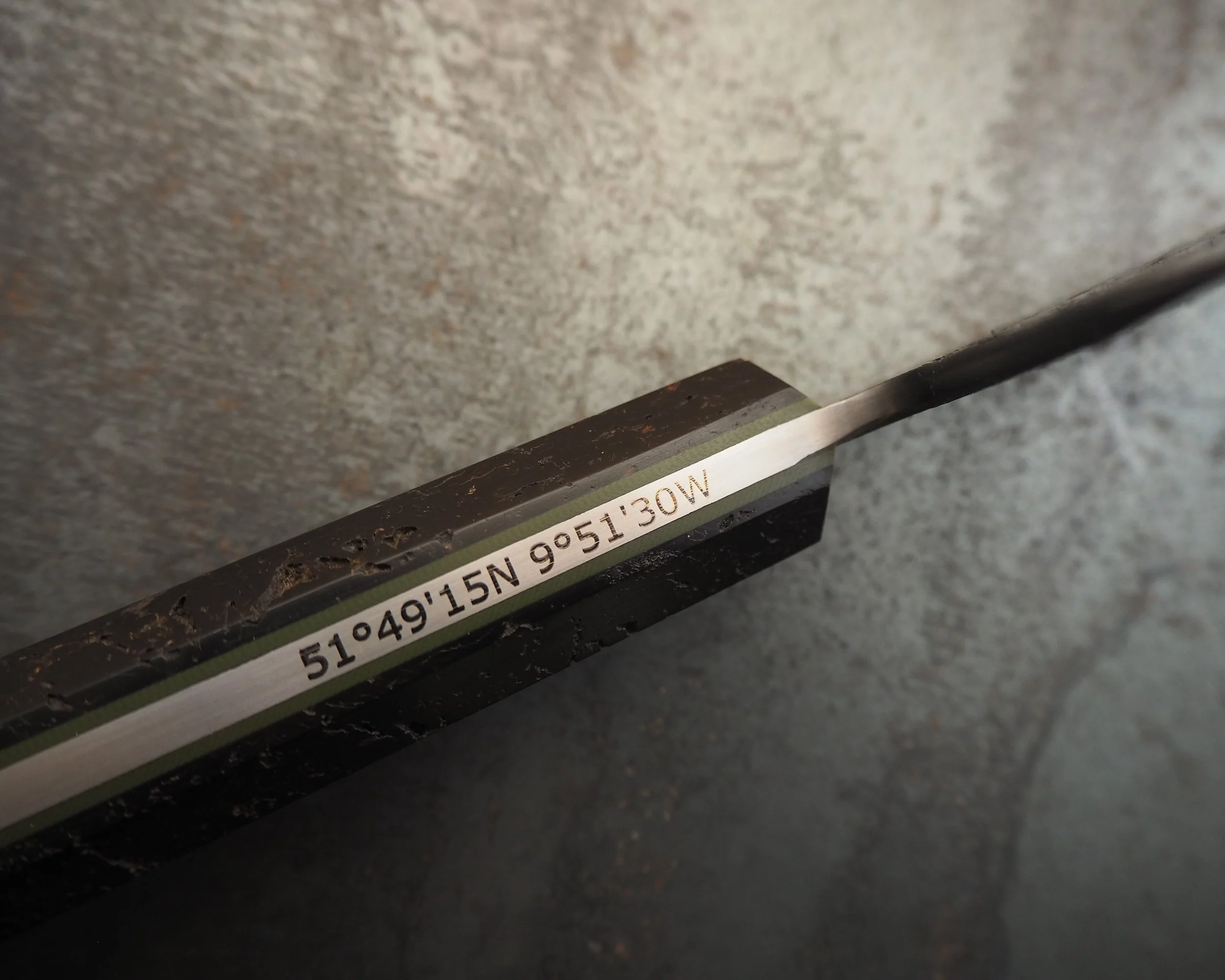Cleaver
The blade of this Cleaver is made of multiple layers of different steels. Known as San Mai, it is formed by forge welding contrasting layers of steel together under immense pressure and heat. In this case, a cutting core of 26C3 high carbon steel is sandwiched between layers of pure nickel and mild steel. This allows for a very hard, razor sharp cutting core, protected on either side by a softer jacket. As the blade was ground and polished, the cutting core was revealed, with each distortion in the nickel representing a different blow of the hammer during forging.
The edges of the spine and choil are softened for comfort in use, and the upper flats of the knife have been left with a “brut de forge” finish to celebrate how the blade was created. The cutting edge has a gentle curve to it, with lots of weight in the blade.
The handle is made of stabilised peat from Parknasilla in Co. Kerry, with olive green G10, brass, and sterling silver pins. It is faceted, and swells nicely to fill the palm for a good grip.
This knife is designed for breaking down meat.
Map coordinates: 51°49'15N 9°51'30W (Parknasilla, Co. Kerry)
Blade length: 160mm
Overall length: 295mm
Weight: 602g
Balance point: 30mm above where the handle meets the blade.
The blade of this Cleaver is made of multiple layers of different steels. Known as San Mai, it is formed by forge welding contrasting layers of steel together under immense pressure and heat. In this case, a cutting core of 26C3 high carbon steel is sandwiched between layers of pure nickel and mild steel. This allows for a very hard, razor sharp cutting core, protected on either side by a softer jacket. As the blade was ground and polished, the cutting core was revealed, with each distortion in the nickel representing a different blow of the hammer during forging.
The edges of the spine and choil are softened for comfort in use, and the upper flats of the knife have been left with a “brut de forge” finish to celebrate how the blade was created. The cutting edge has a gentle curve to it, with lots of weight in the blade.
The handle is made of stabilised peat from Parknasilla in Co. Kerry, with olive green G10, brass, and sterling silver pins. It is faceted, and swells nicely to fill the palm for a good grip.
This knife is designed for breaking down meat.
Map coordinates: 51°49'15N 9°51'30W (Parknasilla, Co. Kerry)
Blade length: 160mm
Overall length: 295mm
Weight: 602g
Balance point: 30mm above where the handle meets the blade.
The blade of this Cleaver is made of multiple layers of different steels. Known as San Mai, it is formed by forge welding contrasting layers of steel together under immense pressure and heat. In this case, a cutting core of 26C3 high carbon steel is sandwiched between layers of pure nickel and mild steel. This allows for a very hard, razor sharp cutting core, protected on either side by a softer jacket. As the blade was ground and polished, the cutting core was revealed, with each distortion in the nickel representing a different blow of the hammer during forging.
The edges of the spine and choil are softened for comfort in use, and the upper flats of the knife have been left with a “brut de forge” finish to celebrate how the blade was created. The cutting edge has a gentle curve to it, with lots of weight in the blade.
The handle is made of stabilised peat from Parknasilla in Co. Kerry, with olive green G10, brass, and sterling silver pins. It is faceted, and swells nicely to fill the palm for a good grip.
This knife is designed for breaking down meat.
Map coordinates: 51°49'15N 9°51'30W (Parknasilla, Co. Kerry)
Blade length: 160mm
Overall length: 295mm
Weight: 602g
Balance point: 30mm above where the handle meets the blade.
It is important to mention that carbon steel blades require a little more care and maintenance than stainless steel, but you will be rewarded with a rich patina that will illustrate the knife’s history with you over a lifetime of use. Each knife comes with instructions on how to look after it.

